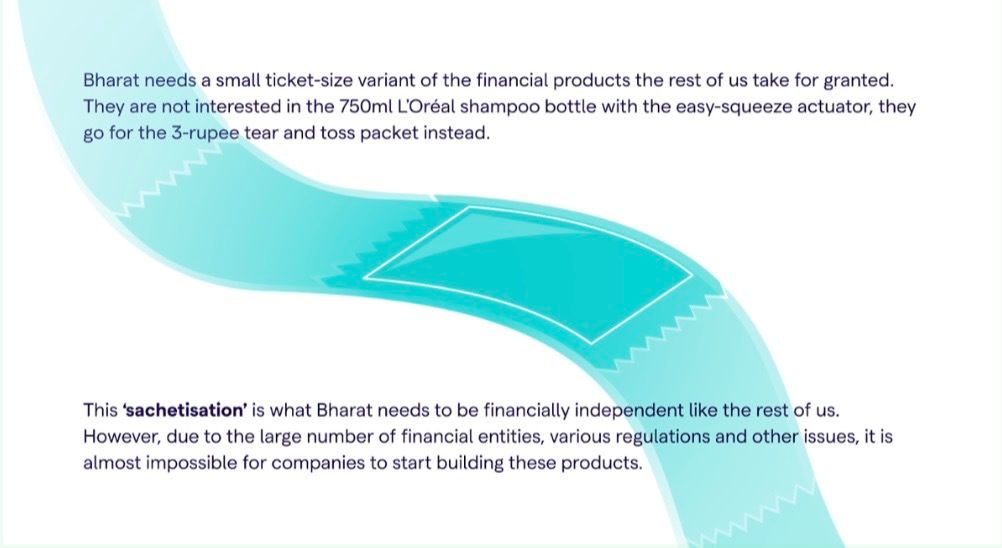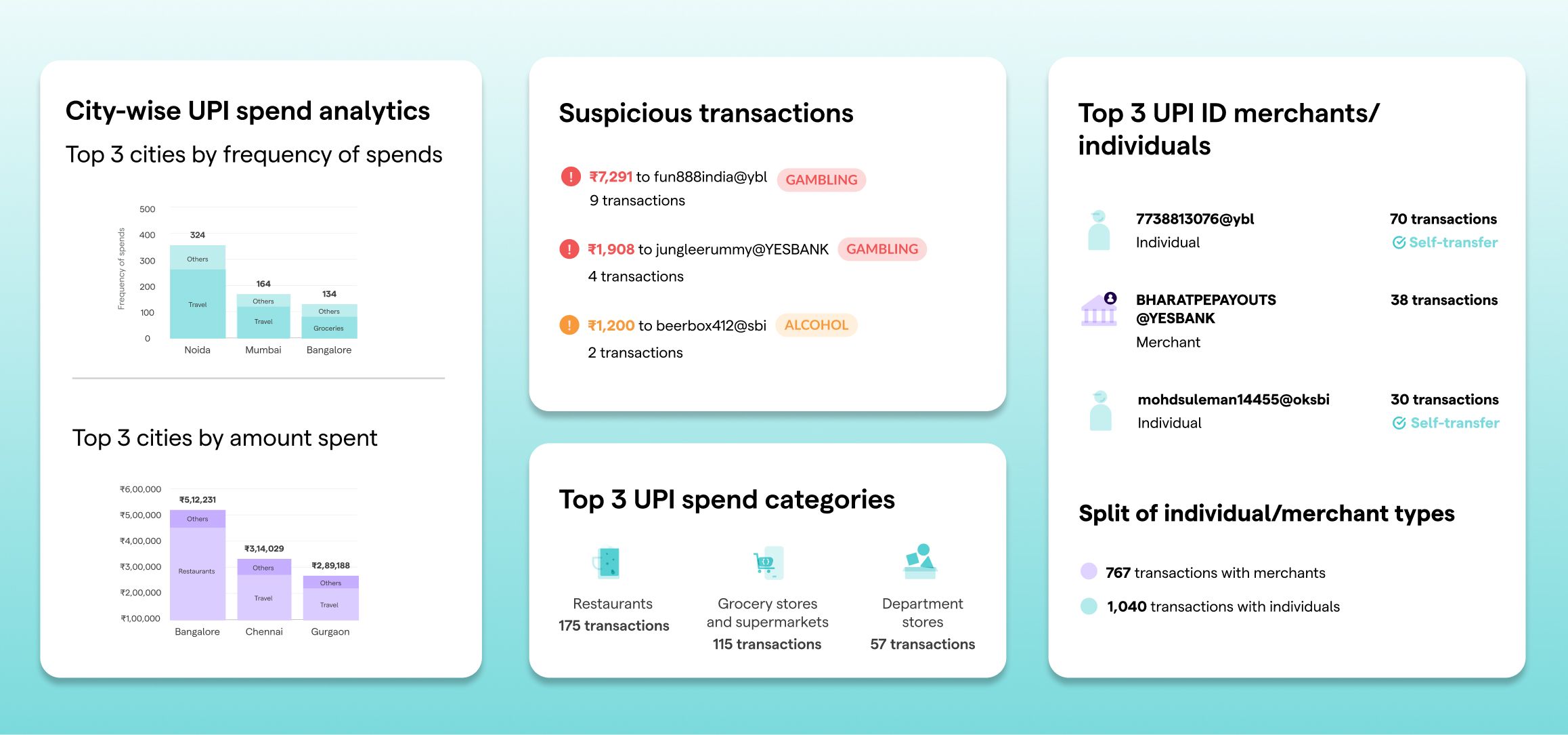Between shampoo sachets and Fintech sachets, we all grew up
24 Aug 2022 — DESIGN AND EVANGELISM

What makes Maggi better? Everyone has that one specific recipe they proclaim to be the best. But for both of us writing this here, it becomes better when we add the extra spice from the magic masala sachets. More the merrier.
As Indians, we like the little things in life.
Most of us did not even buy shampoo until the late 1970s. This was not because we didn't want to, but because the average bottle of shampoo cost more than most Indians were willing or able to pay. As a solution, a smart business owner put enough for one use into sachets that could be sold at a minimal price.
Sales shot up. Customers were given a first step up the consumption ladder, which compelled them to take the next step. FMCG companies showed that small solutions can be used to solve big problems in India. ‘Sachetisation’ is the process of putting everyday items into small packets that are cheap and easy to consume.
In our DNA, we are a nation that prefers tear and toss packets instead of a 750ml shampoo bottle.

This is exactly the kind of sachetisation Fintech has been able to create.
In India, half the population works in the informal sector — household help and the likes. Some of them even make as much money as those in the formal sector, but banks have no financial information about them. So, if they want a loan, the bank won't give them money unless they can put up something hard as collateral.
This segment of the country would end up procuring informal loans with high interest rates and hard-to-meet requirements. They do not get enough help. They are square pegs, but banks are round holes. Sachetised finance is meant for those who need real help. With Fintech coming into the foray, the lending, insurance and investment needs of rural India are being catered to.
India's credit-to-GDP ratio is only 55.7%, while China's is 208.7%. This number indicates one thing — the need for better formal credit penetration into the economy.
Why Bharat needs Fintech in a sachet?#
With nano finance, a farmer who saves ₹100 per month can log onto a financial services marketplace and invest with intermediary platforms. His or her profile is assessed to the risk capability and with an online KYC and Aadhaar linked account is debited with processed units. The India Stack comes into play as an enabler the farmer can further invest in various products based on several factors like savings and risk taking capacity.

A truck driver who is transporting goods through treacherous terrains in unfavourable weather conditions, can insure his family in case of an unforeseen event. All he has to do is approach a local kirana shop for insurance, with a premium of hundred rupees for a cover of ₹10,000. The shop conducts Aadhaar-based authentication of the driver through a point of sale terminal.
Upon verification, the intermediary risk scoring fintech firms can assess the data and the real need for insurance with respect to the risk score. Based on the assessment, the insurance firm approves the policy instantly. Truck driver can now transport goods after getting the policy details secured in his digital locker issued to him. This is how fintech is enabling insurance for Indians in real time.
A fascinating attribute of sachet offerings is that they are not limited to a geographical location or to the realm of financial services alone. Multiple other services such as account activation, account-related services and micro transactions can be enabled regardless of geography or a business segment. Consequently, it looks evident that sachets have enormous potential to serve a large portion of the population via personalised low-value and high-volume transactions.
That is where a regulatory arrangement steps in.
Enabling fintech architecture#
The practicality of financial services in a sachet would be determined by usability, interoperability, real-time decision making, and allowing service needs to be met. It would require providers to shift from a push-based approach of delivering specific items to a pull-based approach of altering basic product offerings to meet specific, context-based needs.
To make sachetisation in finance happen, the Reserve Bank of India (RBI) has taken two important steps.
The first is to start making plans for a public credit registry (PCR). The purpose of PCR is to aggregate an entire database of all credit relationships in the country, from when the credit was first given — to when it was paid off. This will eventually cover all accounts between lenders and borrowers that don't have a minimum size. The main reason to build a PCR is to get rid of information asymmetry and give lenders a full picture of a borrower's debts. The other reason is to give bankers up-to-date information about how good their credit portfolio is.
The second step is to build an Account Aggregator framework that will manage how other financial institutions can access personal financial information based on the user's consent. It lets users ask their financial service providers for their data in a machine-readable format.
Together, the PCR and the Account Aggregator will enable financial intermediaries to see the complicated patterns of how people and businesses spend their money, almost in real time. When these systems start working in the coming months, banks will be able to lend wisely to India's large population of people who don't have access to credit. By using the power of big data analytics and machine learning, banks will be able to make financial products that are tailored to each user.
"If financial services companies want to go back to shampoo sachets, they need to make the packaging smaller, and change the formula. What is the point in giving a farmer a one-year loan who only makes money during one harvest but has to pay back in monthly instalments?”
If the world of formal finance better understood how people spend their money, it could better meet the needs of Indian consumers. There is no reason why we can't augment the country’s credit-to-GDP ratio using smart technology and bring it in line with that of more developed countries. Our solution to the large problem of financial exclusion is to give cash flow-based credit to every Indian.
At Setu, we aim to do that everyday.




